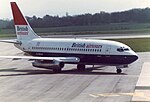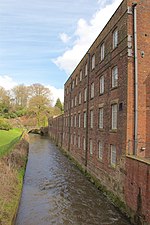Manchester Airport (IATA: MAN, ICAO: EGCC) is an international airport in Ringway, Manchester, England, 7.5 nautical miles (13.9 km; 8.6 mi) south-west of Manchester city centre. In 2019, it was the third busiest airport in the United Kingdom in terms of passenger numbers and the busiest of those not serving London. The airport comprises three passenger terminals and a cargo terminal. It covers an area of 560 hectares (1,400 acres) and has flights to 199 destinations, placing the airport thirteenth globally for total destinations served.Officially opened on 25 June 1938, it was initially known as Ringway Airport, a name still in local use. In World War II, as RAF Ringway, it was a base for the Royal Air Force. The airport is owned and managed by the Manchester Airport Holdings (trading as MAG), a holding company owned by the Australian finance house IFM Investors and the ten metropolitan borough councils of Greater Manchester, with Manchester City Council owning the largest stake. Ringway, after which the airport was named, is a village with a few buildings and a church at the western edge of the airport.
Future developments include the £800 million Airport City Manchester logistics, manufacturing, office and hotel space next to the airport. Ongoing and future transport improvements include the £290 million Eastern Link relief road, which opened in October 2018. A High Speed 2 station known as Manchester Airport High Speed station, once earmarked for opening in 2033, was to create a regular sub-ten-minute shuttle service for connecting rail passengers between central Manchester and the Airport while relieving stress on the Styal line to the Airport from Manchester which has become one of the most congested routes on the National Rail network.After the airport handled a record 27.8 million passengers in 2017, it underwent major expansion to double the size of Terminal 2, the first elements opening in 2019. The £1 billion expansion will be completed in 2024 and enable Terminal 2 to handle 35 million passengers. Capacity exists for up to 50 million passengers annually with two runways; however, this potential figure is limited by the airport's restriction to 61 aircraft movements per hour as well as existing terminal sizes to process arrivals and departures effectively.






